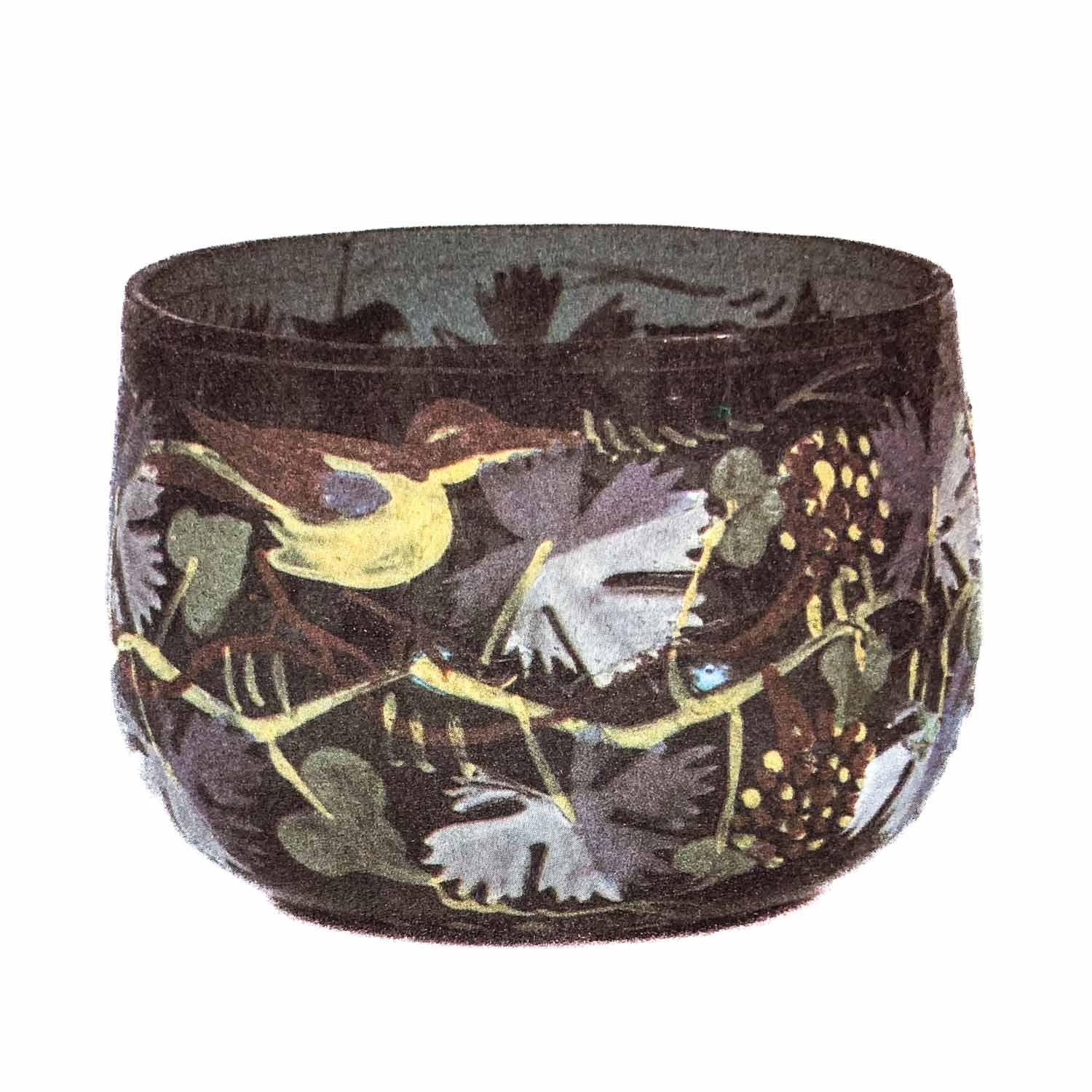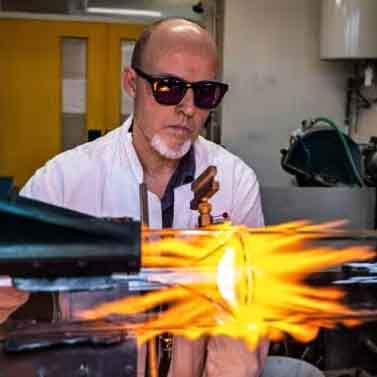The origins of blown glass are somewhat unclear, but it is believed to have been developed in the Syro Palestinian region during the 1st century BC. The Roman Empire quickly adopted this new technique and began producing large quantities of glass objects using blown glass, allowing greater precision and control in the production of glass objects.
The single important technical advance was the invention of mould-blowing, a phenomenon that occurred around AD 25 and led directly to the production of light coloured cups and beakers, some decorated Latin slogans, others with their makers names or displaying lively scenes from the Roman race-track and amphitheater.
The rapidity with which glass changed from a relatively luxurious commodity to an exceedingly ordinary one is mirrored in the comment of Trimalchio, Petronius fictitious in the Satyricon.
One of the most famous examples of Roman blown glass is the Portland Vase, a beautiful blue and white glass vase that dates back to the 1st century AD. The vase is complexly decorated with scenes of the Greek mythology and is considered a masterpiece of the Roman glassmaking.
The Portland Vase, made of glass in the shape of a ceramic amphora (the lower part is now missing), is the most famous example of Roman cameo glass. It is made of cobalt blue glass overlaid with opaque white glass that has been cut with a lapidary to create a beautiful cameo relief. It is thought to depict the classical myth of Peleus and Thetis. Height 24.5 cm. British Museum, London.
Blown glass was used for a wide range of purposes in the Roman Empire, from everyday items such as cups and bowls to more ornate objects like vases and figurines. It was also used in architecture to create colorful mosaics and window panes.The invention of blown glass had an impact on the economy of the Roman Empire as it allowed the production of large quantities of high quality glass objects, that could be traded throughout the empire and beyond creating a thriving glass industry in the Roman world. In addition to its economic impact, blown glass also had cultural significance in the Roman Empire.
Among the most popular blow-decorated objects from the first century AD are the "splashed" vases, adorned with glass bubbles of different colors, such as this two-handled oil flask.
Glass objects were highly prized and were often given as gifts to important individuals, they was used in religious contexts and in various rituals and ceremonies.
These beautiful objects serve as a testament to the skill and ingenuity of the Roman glassmakers who developed the blowing technique over two thousand years ago.
Related Posts:
Art glass in the world
History of glass






Dejar un comentario
Todos los comentarios se revisan antes de su publicación.
Este sitio está protegido por hCaptcha y se aplican la Política de privacidad de hCaptcha y los Términos del servicio.